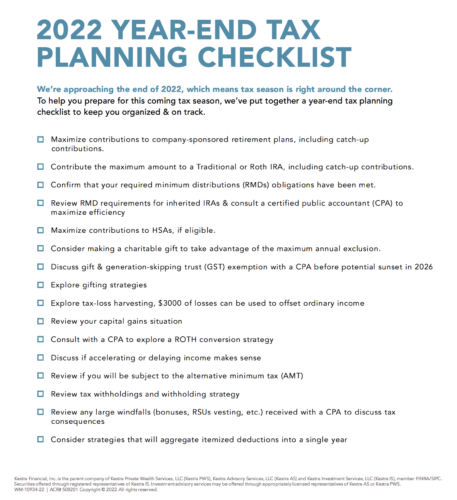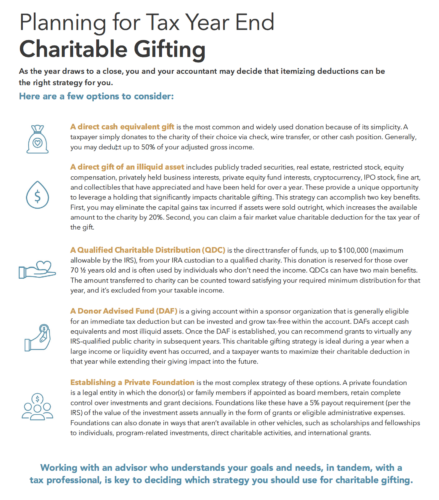
As part of our What to Do When Your Spouse Dies blog series, we’ve covered the top financial moves women need to make, as well as how to claim social security benefits, and today we’re going to take a look at tax strategies for widows. In addition to the devastating emotional impact losing your spouse can bring, many women will also suffer a significant loss of income once becoming a widow, usually due to a decrease in wages or social security. A financial impact like this leaves many widows without the resources to continue to pay fixed expenses such as a mortgage, rent, utilities and property taxes. As a matter of fact, the National Institute on Retirement Security has shown that widows are 80% more likely than men to end up living in poverty in their retirement years after the death of their spouses.
One way to mitigate this loss of income is through tax breaks the IRS provides to qualifying widows, which include a lowered tax rate, a higher standard deduction, as well as eligibility for special tax breaks on investments and real estate.
Changing Your Tax Filing Status
This one is important, so listen up. If you meet the IRS requirements for the “qualifying widow or widower status,” you essentially get close to the same benefits as filing a joint return for up to two years following the year your spouse died. So if your spouse passed away in 2022, you could potentially be classified as a qualifying widow for 2023 and 2024. Now once those two years have ended, your status will change to either the “head of household” if you have dependents or “single” if you don’t.
Qualifying widow or widower status is more advantageous than filing as head of household or as single, as more of your income will be taxed at lower rates, which will reduce your overall tax burden and allow you to keep more of your income. Also, a woman whose spouse died no more than two years ago will benefit from much higher standard deductions, which could save thousands in taxes. Compare the standard deduction for qualifying widows and widowers of $25,900 to only $12,950 for singles and $19,400 for heads of households.
Requirements for Qualifying Widow And Widower Filing Status
The IRS has a few requirements for the qualified widow status. You can walk through a tutorial on their site if you would like to learn more. Taxpayers who do not remarry in the year their spouse dies can file jointly with the deceased spouse. For the two years following the year of death, the surviving spouse may be able to use the Qualifying Widow(er) filing status. To qualify, the taxpayer must:
- Be entitled to file a joint return for the year the spouse died, regardless of whether the taxpayer actually filed a joint return that year.
- Have had a spouse who died in either of the two prior years. The taxpayer must not remarry before the end of the current tax year.
- Have a child, stepchild, or adopted child who qualifies as the taxpayer’s dependent for the year or would qualify as the taxpayer’s dependent except that he or she does not meet the gross income test, or does not meet the joint return test, or except that the taxpayer may be claimed as a dependent of another taxpayer.
- Live with this child in the taxpayer’s home all year, except for temporary absences.
- Have paid more than half the cost of keeping up the home for the year.
What You Need to Know about the Head Of Household Filing Status
After two years have passed, you will no longer be eligible for the qualifying widow or widower status. Once that happens, if you have dependents, you can choose to file as the head of household on your tax return.
According the the IRS, taxpayers may qualify for the Head of Household filing status, if they:
- Are unmarried or “considered unmarried” on the last day of the tax year, and
- Paid more than half the cost of keeping up a home for the required period of time, and
- Had a qualifying person living in their home for more than half the year (except for temporary absences, such as school)
How Do You Know Who Qualifies As A Dependent?
Good question! The IRS provides an interactive tax assistant tool to help you determine whom you may claim as a dependent, but based on the IRS rules and guidelines, your children, stepchildren, adopted children, foster children, and even other relatives such as parents, brothers, sisters, and grandchildren can qualify.
Generally speaking, in order for someone to be considered a dependent, you must provide over half of their financial support. This usually isn’t hard to do for children living in your home, but it may be more challenging to prove if you financially support a parent or family member who lives separately.
Should I File As Single?
If you have no dependent children and no one that depends on you for financial support, you should file using the single status.
Step-Up in Basis – Special Tax Breaks On Investments and Real Estate
Now that we’ve got all the filing status considerations out of the way, let’s look at some special investment tax breaks all widows are eligible to take, specifically investments jointly owned with their deceased spouse or those solely in their husband’s name that they inherit.
When you inherit property and investments, the IRS gives what’s called a step-up in basis on the asset which refers to the adjustment in the cost basis of an inherited asset to its fair market value on the date of the original owner’s death. The cost basis of an asset is generally the purchase price plus any additional costs added over time to improve or maintain the original asset.
Investment Tax Breaks
So if a widow inherits a taxable investment account from her spouse, it may qualify for a step-up in basis for tax purposes, saving capital gains taxes which are imposed when a security is sold. This means the seller will only pay taxes on the amount that the investment account increased over the basis.
Basically, a step-up in basis effectively resets the cost basis of an appreciated inherited asset for tax purposes, raising the cost basis to the asset’s market value on the date of the original owner’s death, reducing future capital gains taxes. While in some cases the asset’s market value may be lower at the time of death, most of the time these are long-term holdings which tend to have positive rates of return. In the event the value is lower, they would be adjusted down as a step-down basis.
Let’s say a widow inherits her spouse’s brokerage account with a tax basis of $500,000. The account, at the time of the spouse’s death, had grown to a value of $2,000,000. The widow’s new tax basis gets stepped up to the $2,000,000 amount, which means she’ll have tremendous savings in capital gains taxes whenever she sells this asset at a future date. At the future time of sale, she’ll only pay taxes on the profits calculated over $2,000,000 instead of over the original cost basis of $500,000.
Real Estate Tax Breaks
The same basic premise applies to inherited real estate, if the property was co-owned or owned solely by the deceased spouse. A step-up basis on a primary residence, vacation house, or rental property could translate into a lower tax bill at the time of sale.
Many women eventually downsize their homes and move to another property after the loss of a spouse, which may help reduce housing expenses such as mortgage, property taxes, and utilities and also help reduce the amount of time and costs associated with upkeep. With the housing boom in the past few years significantly raising the value of many homes, selling can provide widows a much more financially sound position in which they can use the after-tax proceeds for ongoing living expenses or even to increase a retirement nest egg.
We’re Here to Help
If you’d like to learn more about tax strategies for widows or other financial considerations, please give us a call today or schedule an appointment to talk to an advisor. We are here to help whenever you’re ready.





